

|
New Mexico Rosy Finch Trip Summary & Photos ~ Jan 26th-30th '06
|
|
|
|
|
| Yellow Grosbeak at feeders, Albuquerque. Couldn't miss this guy! |
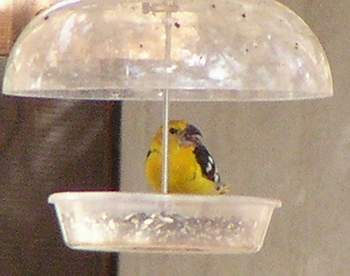 |
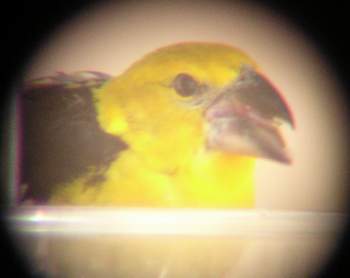 |
Yellow Grosbeak through scope. That's one big beak! |
| Ring-necked duck Taken at the Rio Grand Nature Center. |
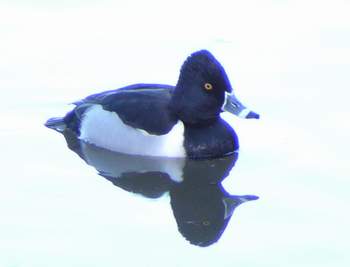 |
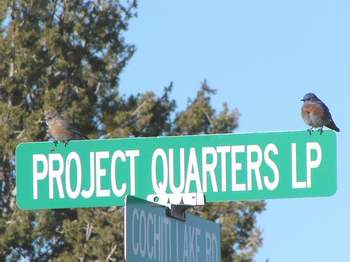 |
Western Bluebirds Near Cochiti Lake. |
| Western Bluebird |
 |
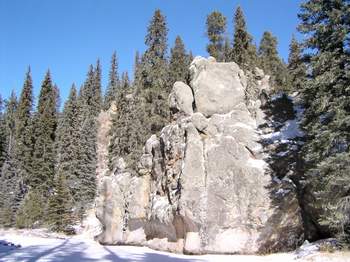 |
Apache Springs Trail near Valle Grande. This was such a pretty trail that photos just couldn't capture. The snow was about 8" deep. It was so quiet here that even the squeeking of the pine trees fooled me into thinking there was a woodpecker drumming somewhere! |
| Jemez Falls Seen in the summer the falls and trails around are very pretty but it is just as beautiful in Winter when all is frozen and well worth the short hike. |
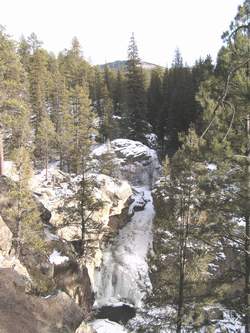 |
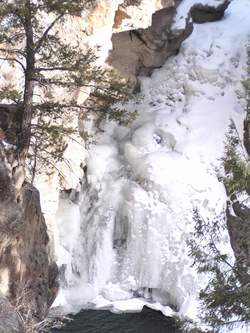 |
The frozen falls. Not clearly seen in this photo, the falls could still be seen flowing underneath the ice. |
| American Dipper I was finally able to get this distant shot only after I found my camara which had come lose from my belt! |
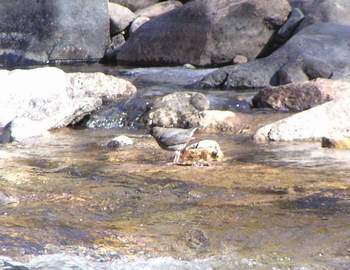 |
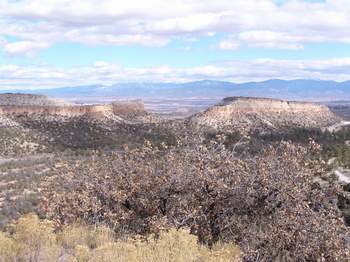 |
Views from Jemez Mountains Taken from a pull-off on the way to Los Alamos. |
| Closer views... |
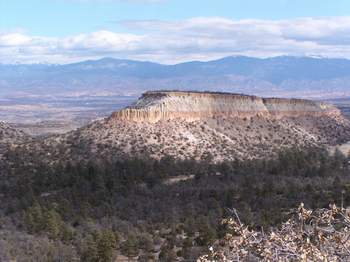 |
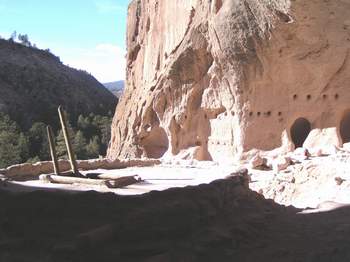 |
View from "Alcove House", Bandelier National Monument. Home of the Ancestral Pueblo people of Frijoles Canyon. This cave is 140 feet climb straight up using 4 ladders. The cave was enlarged to provide living rooms as well as a small kiva entered from above. |
| Kiva inside Alcove house. This is the Kiva with the entrance traditionaly in the roof. Kivas were gathering places used to pass on knowledge from parent to child and where important desisions were made. The Kiva was the heart of the community. |
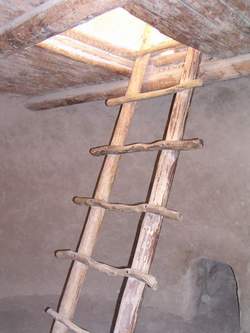 |
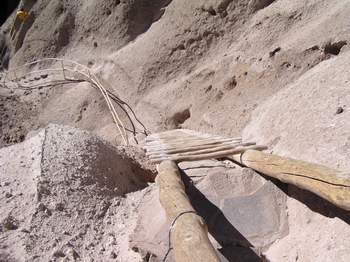 |
Ladders looking down from Alcove House. "We've got to go back down that?"! |
| Petroglyph. Several petroglyphs could be seen carved into the cliff face. |
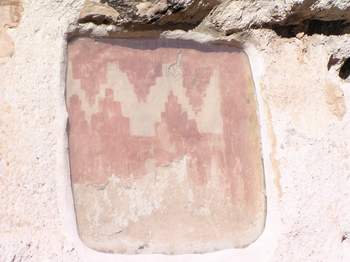 |
 |
Village of Tyuonyi (chew-ohn-yee) This plaza housed approximately 100 people and contained 3 kivas. |
| The Long House The Long House consisted of two or three rooms which extended in front of the cliff face. Here holes known as "Viga" holes originally held the roof beams and could be seen in rows along the cliff face. |
 |
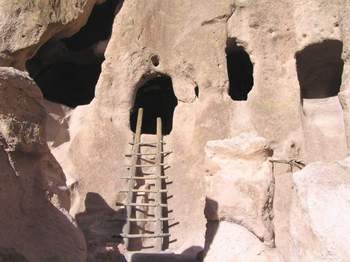 |
Cavate dwellings. These dwellings were known as cavates (Pronounced CAVE-eights) and were carved out of the soft cliff wall made of volcanic "Tuff". These rooms may also have made use of the solar energy by being south facing. The temperature along this cliff is about 13 degrees warmer than on the canyon floor. |
| Inside of a cavate. |
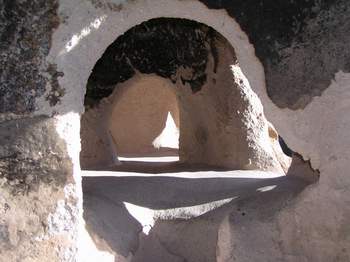 |
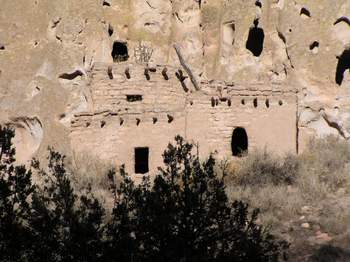 |
Talus House This is a reconstruction built in 1920 showing how some of the cliff dwellings may have looked. However, more recent information suggests the entrances would have been through the roof and not in front as shown here. |
| Camel Rock Camel Rock is located between Santa Fe and Espanola in Tesuque Pueblo. It is a naturally eroded sandstone formation. Back to Bird Trips Copyright © 2025, All rights reserved.6864 |
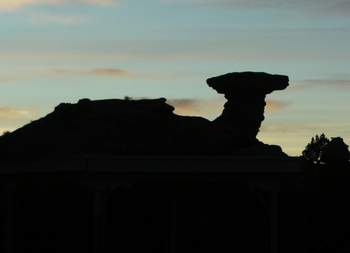 |

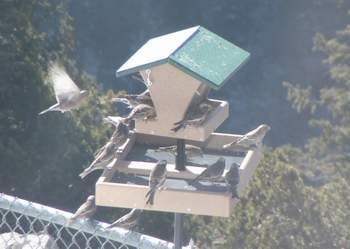 At the end of January I went on a trip with some friends to New Mexico, the target birds being the three species of Rosy Finch at Sandia Crest. After a long drive over night we arrived at 8am the next morning and entered the building as soon as the doors were open. We didn't have to wait that long before all three species flew onto the feeder, which we viewed from the comfort of the restauraunt with mugs of hot chocolate in hand! The Gray-crowned, Brown-capped and Black Rosy Finches were also accompanied by the sub species "Hepburn's", giving us one in the bank if they eventually split the bird into a separate species. Mountain Chickadee, Red-breasted Nuthatch, American Robin, Hairy Woodpeckers and Red-tailed Hawk were also up on the Crest.
At the end of January I went on a trip with some friends to New Mexico, the target birds being the three species of Rosy Finch at Sandia Crest. After a long drive over night we arrived at 8am the next morning and entered the building as soon as the doors were open. We didn't have to wait that long before all three species flew onto the feeder, which we viewed from the comfort of the restauraunt with mugs of hot chocolate in hand! The Gray-crowned, Brown-capped and Black Rosy Finches were also accompanied by the sub species "Hepburn's", giving us one in the bank if they eventually split the bird into a separate species. Mountain Chickadee, Red-breasted Nuthatch, American Robin, Hairy Woodpeckers and Red-tailed Hawk were also up on the Crest.